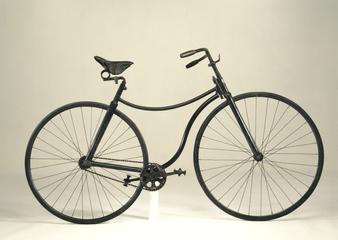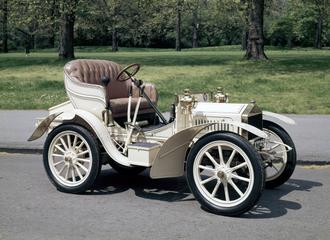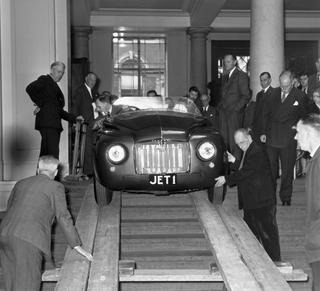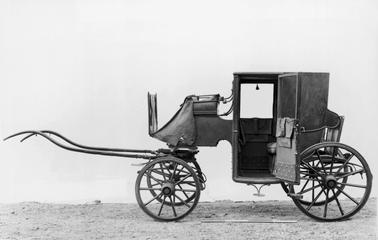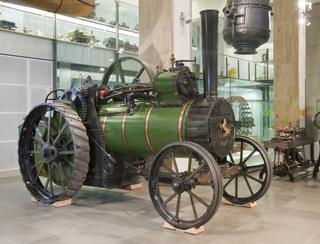
Child's carriage (or "go-cart"), c.1895
- Made:
- circa 1895 in unknown place
This child’s “go-cart” or “mail-cart” was built around 1895 by an unknown maker. The body of the carriage is approximately three feet high and four feet long and two feet wide and is mostly made of wood railings and panels fitted into metal frames. The seating of the vehicle is cushioned with leather belts.
The carriage has two large spoked central wheels roughly 147cm in diameter, as well as a set of two front mounted wheels roughly22cm in diameter. Both sets of wheels had solid rubber tires.
This “go-cart” or “mail cart” was a design of children’s carriage (sometimes called a perambulator) meant for children to play with.
Whilst children’s carriages in the UK can be traced back to the mid-18th century, the more recognisable four wheeled perambulators (or ‘prams’) which are still seen today were developed in the mid-19th century. Early patented designs include G.W Woodruffe and C. Milnes’s ‘three- or four-wheel perambulator’ patented in 1861, which included a back-to-back seating arrangement. Whilst initially designed primarily for very young children and babies, the popularity of perambulators (or prams as they are now known) led to designs which accommodated older children and adolescents.
This popularity led to the parallel development of various distinct styles, shapes and sizes of children’s carts, carriages and perambulators during the late-19th century. These designs became popular towards the end of the 19th century.
This carriage was built with two large central wheels and a front set of smaller wheels at the front. The cart also comes with other important features such as buckled leather safety belts and highly curved single plate springs, both of which helped ensure the safety of young passengers.
Details
- Category:
- Road Transport
- Object Number:
- 1937-13
- Materials:
- wood (unidentified), metal (unknown) and leather
- type:
- carriages
- credit:
- Miss K.M. Shaw.
